- Home
- Frederick Douglass
The Heroic Slave Page 2
The Heroic Slave Read online
Page 2
Frederick Douglass and Madison Washington became public heroes at almost precisely the same time. Washington was front-page news beginning in December 1841, after the crew of the Creole returned to New Orleans. He was immediately cast as a hero by antislavery northerners; and when stories of his attempt to liberate his wife became known in the spring of 1842, he was further celebrated. Douglass, after escaping from slavery in Maryland in 1838, settled in New Bedford, Massachusetts, with his wife, Anna Murray, a free black woman. Already literate and skilled as an orator, he preached in the city’s AME Zion church while earning money as a day laborer. He subscribed to the Liberator, the Boston organ of the American Anti-Slavery Society, edited by the great abolitionist leader William Lloyd Garrison. He read the Liberator as devoutly as his Bible, “mastering” its contents each week. As he later remarked: “The paper became my meat and my drink.”13 In August 1841 he attended a national abolitionist convention in Nantucket, where he spoke to a mostly white audience of five hundred people. On the strength of his speech, he was hired as a full-time paid lecturer for the Massachusetts Anti-Slavery Society, an auxiliary of the Garrisonian-controlled American Anti-Slavery Society. In December 1841, the same month that the Liberator featured news of the Creole mutiny, a journalist termed Douglass “a hero” when describing his performance as a speaker: “This is an extraordinary man. He was cut out for a hero…. He has the ‘heart to conceive, the head to contrive, and the hand to execute.’” The assessment echoed descriptions of Madison Washington from antislavery journalists. In fact, Douglass would portray Washington in The Heroic Slave in almost identical terms: “He had the head to conceive, and the hand to execute.”14
Douglass resembled Madison Washington in other ways as well. Both were given names “unfit for a slave, but finely expressive for a hero,” as the newspaper article “The Hero Mutineers” said of the latter. Douglass had been born Frederick Augustus Washington Bailey, his two middle names reflecting great republican leaders. Like most fugitives, he had discarded his surname after reaching free soil, taking on the new surname “Douglass”—the Scottish lord in Sir Walter Scott’s poem The Lady of the Lake (1810)—as a way of marking his social ascent.15
Then, too, they were both large, strong men who had fought their way to freedom while displaying leniency toward their oppressors. Madison Washington commenced the mutiny by throwing off two men who had seized him. The turning point in Douglass’s life as a slave, as he often noted, was his famous fight with Edward Covey, a “slave breaker” from Maryland’s Eastern Shore, to whom he had been hired out. During their epic, two-hour battle, Douglass could probably have killed Covey. But he went “strictly on the defensive,” as he later wrote, and after two hours Covey gave up, having been “mastered by a boy of sixteen.” The effect was extraordinary; as Douglass noted in his Narrative of the Life of Frederick Douglass, an American Slave (1845) and My Bondage and My Freedom (1855): “I now resolved that, however long I might remain a slave in form, the day had passed forever when I could be a slave in fact.” Covey never whipped him again. A slave who refused to be flogged was already more than “half free.”16
Douglass, who would have read accounts of the Creole rebellion in the abolitionist press, greatly admired Washington’s heroism. This was no doubt partly owing to their similarities. But it was also an age of hero worship. Having read Thomas Carlyle’s hugely influential book on heroes, Douglass acknowledged that he, too, was a hero-worshipper, and Washington would emerge as one of his heroes.17 In the first few years after the rebellion, however, Douglass felt constrained against publicly lionizing Washington. His first public mention of Washington in a speech was in 1845, more than three years after the uprising.18 This silence stemmed partly from Douglass’s commitment during this time to the American Anti-Slavery Society’s emphasis on moral suasion as the sole means of ending slavery. Pacifism was the defining doctrine of the society, and Garrison and his associates did not hesitate to criticize abolitionists—notably, blacks and Liberty Party members—who condoned or sanctioned militancy. For example, when the black abolitionist Henry Highland Garnet, a minister and Liberty Party member, celebrated Madison Washington as a revolutionary hero in an address at an 1843 black convention, the American Anti-Slavery Society rebuked him: “Trust not the counsels that lead you to the shedding of blood.” Douglass, who was at the convention, also dissented from Garnet’s militancy. There was “too much physical force” in his address, he said. He wanted “to try the moral means a little longer,” adding that Garnet’s address would lead to “insurrection,” which would be a “catastrophe.”19
Two years later, Douglass offered a dramatically different perspective on the Creole rebellion. During an October 1845 speech in Cork, Ireland, he transformed Washington from a violent insurrectionary into a revolutionary hero, echoing Garnet’s praise for the man. “Madison Washington had in imitation of George Washington gained liberty,” he proclaimed, but white Americans “branded him as being a thief, robber and murderer.”20 Developing the parallels between American Revolutionary heroes and Washington, he claimed that the condemnation of Washington, which was rife among southerners (and among many northerners, too) stemmed largely from racism, which kept them from seeing how Madison Washington acted in the tradition of such celebrated Virginia patriots as Thomas Jefferson, Patrick Henry, and George Washington.
Why this profound shift? Much had changed for Douglass between 1843 and 1845. In May 1845 he published his Narrative of the Life of Frederick Douglass, which made him nationally famous, virtually a household name; but it also greatly jeopardized his freedom. Fearing fugitive slave hunters, he fled to the British Isles for protection. No longer under the watchful eye of the American Anti-Slavery Society’s leaders, he could now speak his mind more openly. He had already been reprimanded by the society, as he later remarked in My Bondage and My Freedom, “for insubordination to my superiors,” and he had discovered that most white abolitionists were not immune to the racial prejudice that pervaded the country. Many white colleagues patronized him: just “give us the facts,” said one, and “we will take care of the philosophy.” But in the British Isles, Douglass experienced “a perfect absence of everything like that disgusting hate with which we are pursued in America.” Similarly, while many white Americans treated the Creole rebels as murderers, most Britons viewed them as heroes. As one British editorial writer proclaimed, they were as “justified in their actions as prisoners of war.”21
After spending nearly two years touring the Britain Isles as an antislavery lecturer, Douglass was tempted to remain there permanently. He was so popular in Britain that he regularly filled auditoriums, some of which held over seven thousand people. Often in his speeches he invoked the heroism of Madison Washington and his fellow rebels. British sympathizers purchased Douglass’s freedom, much as they had given Washington his liberty; and they raised an additional $2,000 as a cushion for Douglass against financial worries. After returning to the United States, Douglass used that money to purchase a printing press so that he could start up his own newspaper, the North Star, a decision that frayed his relationship with Garrison, the editor of the Liberator. Reunited with his family, Douglass moved to Rochester, New York, which lacked an abolitionist newspaper and yet was a Liberty Party stronghold and a hub on the Underground Railroad.
In Rochester, Douglass befriended people who had personally known Madison Washington. As a result of these friendships, he no doubt heard more stories about Washington. Hiram Wilson, a Quaker abolitionist living in Canada, had opened his home to Washington; and Douglass got to know him through their involvement in the Western New York Anti-Slavery Society. Lindley Murray Moore, a Rochester abolitionist, had harbored Washington as well, and had also raised money to help him on his journey back to Virginia to free his wife. Douglass and Moore lectured at many of the same events, including Rochester’s 1852 Independence Day celebration, where Douglass gave his famous speech “What to the Slave Is the Fourth of July?” And Moore c
ontributed an essay to Autographs for Freedom, the collection of antislavery writings in which The Heroic Slave was first published.22
Douglass’s remarks on Washington between 1843 and the publication of The Heroic Slave in 1853 (which can be traced in part 3 of this volume) reveal his growing fascination with the Creole rebellion. That interest paralleled his loss of faith in peaceful means for ending slavery. Events in the late 1840s, and then the passage of the Fugitive Slave Act of 1850, radicalized countless abolitionists, such as John Brown, who became a friend of Douglass’s. In moving to Rochester, Douglass effectively abandoned the paternalistic influences of the American Anti-Slavery Society, which advocated nonresistance and considered politics, government, and violence equally corrupt. Initially, his newspaper sought to bridge the divide between nonresistance and the Liberty Party, which justified the use of force by calling on every loyal American to interfere with slavery wherever it existed. But in 1851, Douglass officially turned his paper into an organ of the Liberty Party, changing its name from the North Star to Frederick Douglass’ Paper and switching his loyalties from Garrison to Gerrit Smith, a founder of the Liberty Party and its three-time presidential candidate (he was also a wealthy benefactor who helped Douglass with some of the funding for his newspaper). Significantly, Gerrit Smith, William Lloyd Garrison, and Madison Washington are the only three historical figures in The Heroic Slave. Smith is described as “a devoted friend” of blacks, who would receive Washington “gladly.”23
Inspired by the Creole rebels, Douglass planned a trip to Nassau in February 1852, no doubt hoping to meet with Madison Washington. According to articles in his newspaper and in the New York Tribune, the purpose of the trip was to obtain “antislavery impressions” that would give him “ample materials” for writing an account of the rebellion. Included among these materials would have been the words of Madison Washington, for the article in Frederick Douglass’ Paper noted: “Nassau is the home of the heroes of the Creole. Madison Washington himself is there.” Although Douglass ended up not visiting Nassau, his plans suggest his continuing deep fascination with Washington—a fascination that eventually inspired him to write The Heroic Slave.24
The publication of The Heroic Slave in Autographs for Freedom (January 1853; see figure 1) coincided with the legal settlement of the Creole mutiny. Britain refused to pay restitution for the liberated slaves, but agreed to establish an Anglo-American claims commission to assess the case. The umpire, Joshua Bates, was a Boston partner in the House of Baring, a British financial firm that had financed the Louisiana Purchase. On 8 February 1853, Bates ruled that the authorities at Nassau had violated “the established law of nations” and that southern claimants were entitled to compensation for the loss of their property. Two years later, Britain paid the former owners a fair market value of $110,000 for their slaves. At the very moment when the legal system declared a victory for southerners, Douglass offered a literary brief declaring victory for the rebel slaves. From this perspective, he emphasized that fiction was more effective than law in representing the truth of the Creole affair.
1. Autographs for Freedom (1853), title page. Collection of John Stauffer.
What are the truths that Douglass explores in The Heroic Slave? One is that fiction has the potential to be more honest, or authentic, than nonfiction narratives of the Creole rebellion, a number of which are included in this edition. The journalistic accounts of Madison Washington, both proslavery and antislavery, based their assessments of him on scant evidence—primarily, depositions taken by whites aboard the Creole. And this evidence was conflicting: Washington could reasonably be construed as either a temperate revolutionary hero fighting for his and his compatriots’ freedom, or a tyrant. According to some accounts of the rebellion, at its outset he shouted to his fellow rebels, “We have begun, and must go through,” followed by a threat to the other 116 slaves: “Come up, every one of you! If you don’t lend a hand, I will kill you all, and throw you overboard.” In describing Washington as a hero, antislavery journalists ignored evidence of such coercive threats. Douglass avoids the conundrum of parsing the scant historical record by acknowledging at the very beginning of The Heroic Slave that “glimpses” of Washington “are all that can now be presented”: “We peer into the dark, and wish even for the blinding flash, or the light of northern skies to reveal him. But alas! he is still enveloped in darkness.” Having made this concession, Douglass goes on to portray Washington as a sublimely fascinating fictional character based on the historical record.25
Douglass had long recognized that truth telling was, along with rhetoric (the art of persuasion), one of the abolitionists’ most potent weapons against slavery. Historical fiction enabled him to couple honesty with his rhetorical gifts. His planned trip to Nassau in February 1852 hints that he may have hoped to write a nonfiction account of the Creole rebellion, based on interviews with Washington and other participants, before recognizing, right around the time of the 20 March 1852 publication of Uncle Tom’s Cabin, that he could do even more through the power of fiction. Stowe’s novel, which Douglass greatly admired, sold an unprecedented 10,000 copies in its first week of publication, in large part because serialization of the novel in the antislavery weekly the National Era from June 1851 to April 1852 had sparked interest in the book. Uncle Tom’s Cabin sold 300,000 copies in its first year and became the publishing phenomenon of the nineteenth century. As Douglass would do in The Heroic Slave, Stowe characterizes her narrative as one based on historical facts: the narrator declares in the final chapter that the “separate incidents that compose the narrative are, to a very great extent, authentic, occurring, many of them, either under her own observation, or that of her personal friends.” Stowe further authenticated her novel by publishing A Key to Uncle Tom’s Cabin (1853), which presented the “facts and documents upon which the story was founded.”26
Douglass was one of the first newspaper editors to recognize the degree to which Stowe’s novel was converting millions of northerners into antislavery advocates who would resist the Fugitive Slave Law and heed the “higher law” of God. In April 1852, his newspaper included an in-house review of Uncle Tom’s Cabin (probably by the managing editor, Julia Griffiths), which concluded: “We doubt if abler arguments have ever been presented in favor of the ‘Higher Law’ theory, than may be found here.” Over the next two years, Douglass publicized and promoted Stowe’s novel, hoping that Stowe would donate money earned from her novel and antislavery tours to help him create a black mechanics institute in Rochester. Flattered by Douglass’s attention, Stowe not only contributed a poem to the volume of antislavery writings in which The Heroic Slave appeared but also gave the volume its title, as reported in the 13 August 1852 issue of Frederick Douglass’ Paper: “The gifted authoress of ‘Uncle Tom’s Cabin’ has christened it ‘Autographs for Freedom.’” In essence, the success of Uncle Tom’s Cabin paved the way for The Heroic Slave, the first historical fiction by an African American.27 And though Stowe never gave Douglass the funds he was hoping for, they had a genuinely productive literary relationship. In The Heroic Slave, Douglass departs from Stowe’s idealization of the nonviolent, Christlike Uncle Tom by depicting a black-skinned hero who is more than willing to use violence to gain his freedom from slavery. And in Stowe’s second antislavery novel, Dred (1856), she responds to Douglass’s conception of a more activist black heroism by creating her own black-skinned revolutionary hero, Dred, who, like Madison Washington, adopts violence in his war against white enslavers.28
A second large truth, or insight, that Douglass emphasizes in The Heroic Slave, going against the grain of his 1840s commitment to Garrisonian moral suasion, is the productive confluence between slave resistance and abolitionism. By the late 1840s and early 1850s, Douglass had come to recognize that slave resistance could play a crucial role in the antislavery movement. Slave resistance had inspired the formation of the first abolition societies by calling attention to the barbarities of the slave system that gave r
ise to such violence. As an ex-slave who often still defined himself as a fugitive, Douglass understood that slavery was what he called “a state of war” between master and slave. There could thus be no peace in the nation until slavery was abolished. The Creole rebellion had highlighted for him the problem of insisting upon pacifism as the sole means of ending slavery.29
Douglass’s Madison Washington seems to embody the essential abolitionist doctrine of slave resistance, summarized in Romans 13: “Resistance to tyrants is obedience to God.”30 But he isn’t simply physical in his resistance; he is eloquent as well. The only hint in the historical record of Washington’s oratorical skills is his brief, arresting address to his fellow mutineers to commence the rebellion, followed by his threat to the slaves. From the historical silences, Douglass uses fiction to give Washington the voice that dominates the novella. Washington’s eloquent defense of his rebelliousness enables Mr. Listwell, the white hero, to empathize with him. Mr. List-well is aptly named; he can “listen well” to what this black leader has to say. In part 1 of the novella, Listwell is politically transformed after eavesdropping on Washington’s eloquent words. Washington’s “soliloquy” rang “through the chambers of his soul, and vibrated through his entire frame.” “From this hour,” Listwell vows, “I am an abolitionist.” Washington even comes close to converting Tom Grant, the overseer on the Creole, who was modeled on the historical William Merritt (see Merritt’s deposition in part 2 of this volume). “The fellow loomed up before me,” Grant says of Washington. “I forgot his blackness in the dignity of his manner, and the eloquence of his speech. It seemed as if the souls of both the great dead (whose names he bore) had entered him.”31 Douglass suggests that rebellion alone will not convert whites into viewing blacks as equals and citizens. Effective abolitionism required rebellion plus truth-telling eloquence. His hero unites both rebelliousness and eloquence in order to undermine slavery and racism, much as Douglass was trying to do.

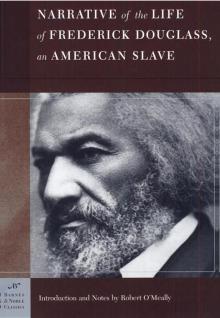 Narrative of the Life of Frederick Douglass: An American Slave
Narrative of the Life of Frederick Douglass: An American Slave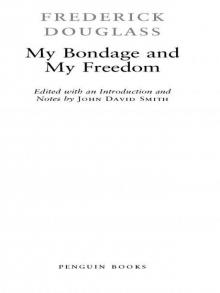 My Bondage and My Freedom
My Bondage and My Freedom Two Slave Rebellions at Sea
Two Slave Rebellions at Sea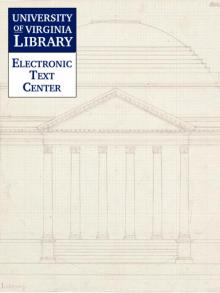 The Color Line in America
The Color Line in America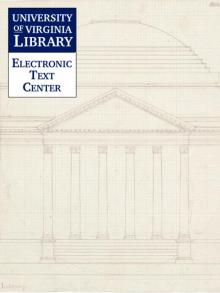 The Negro Exodus from the Gulf States
The Negro Exodus from the Gulf States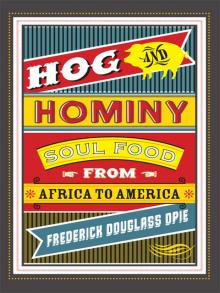 Hog and Hominy: Soul Food From Africa to America
Hog and Hominy: Soul Food From Africa to America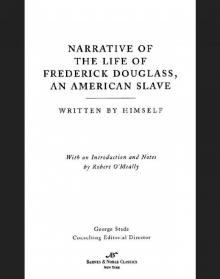 Narrative of the Life of Frederick Douglass
Narrative of the Life of Frederick Douglass![An Appeal to Congress for Impartial Suffrage [a machine-readable transcription] Read online](http://i1.bookreadfree.com/i/03/23/an_appeal_to_congress_for_impartial_suffrage_a_machine-readable_transcription_preview.jpg) An Appeal to Congress for Impartial Suffrage [a machine-readable transcription]
An Appeal to Congress for Impartial Suffrage [a machine-readable transcription]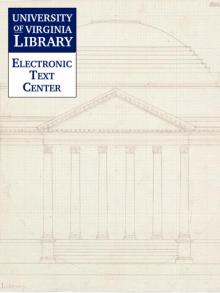 The Color Line
The Color Line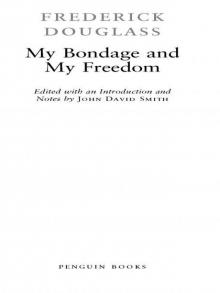 My Bondage and My Freedom (Penguin Classics)
My Bondage and My Freedom (Penguin Classics)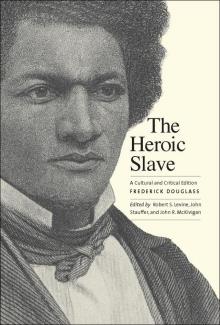 The Heroic Slave
The Heroic Slave